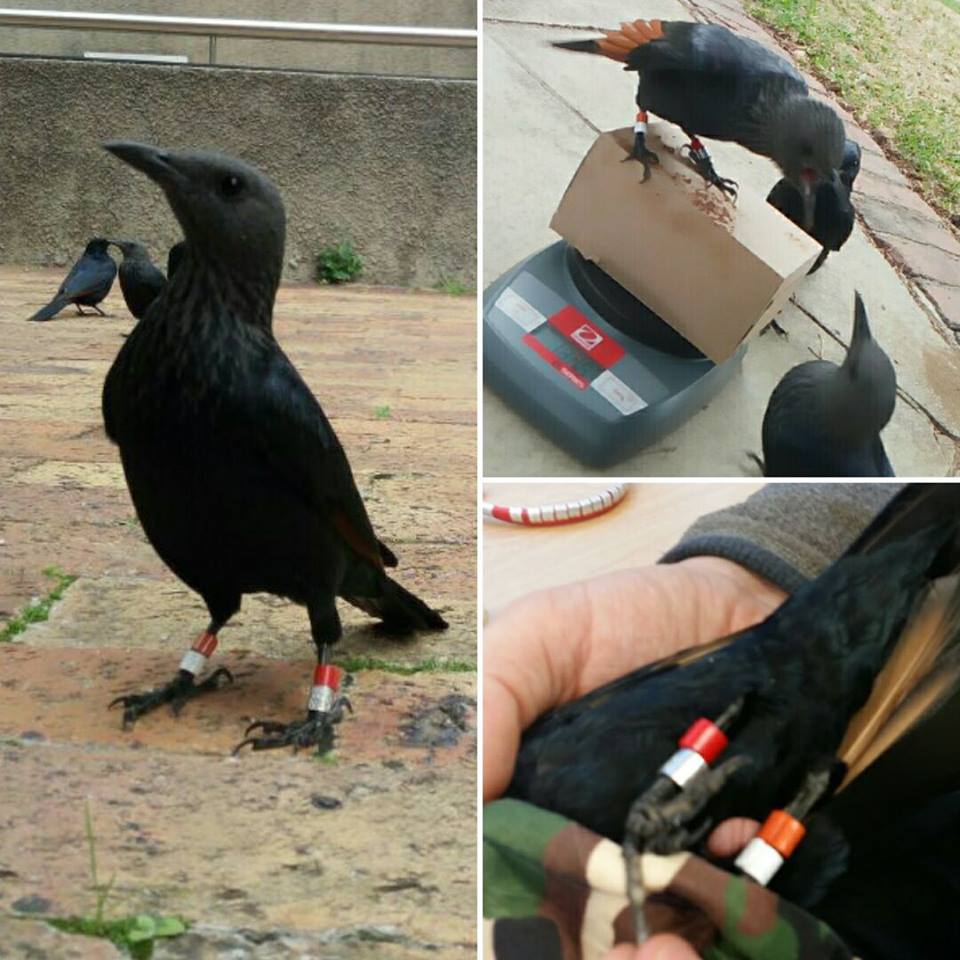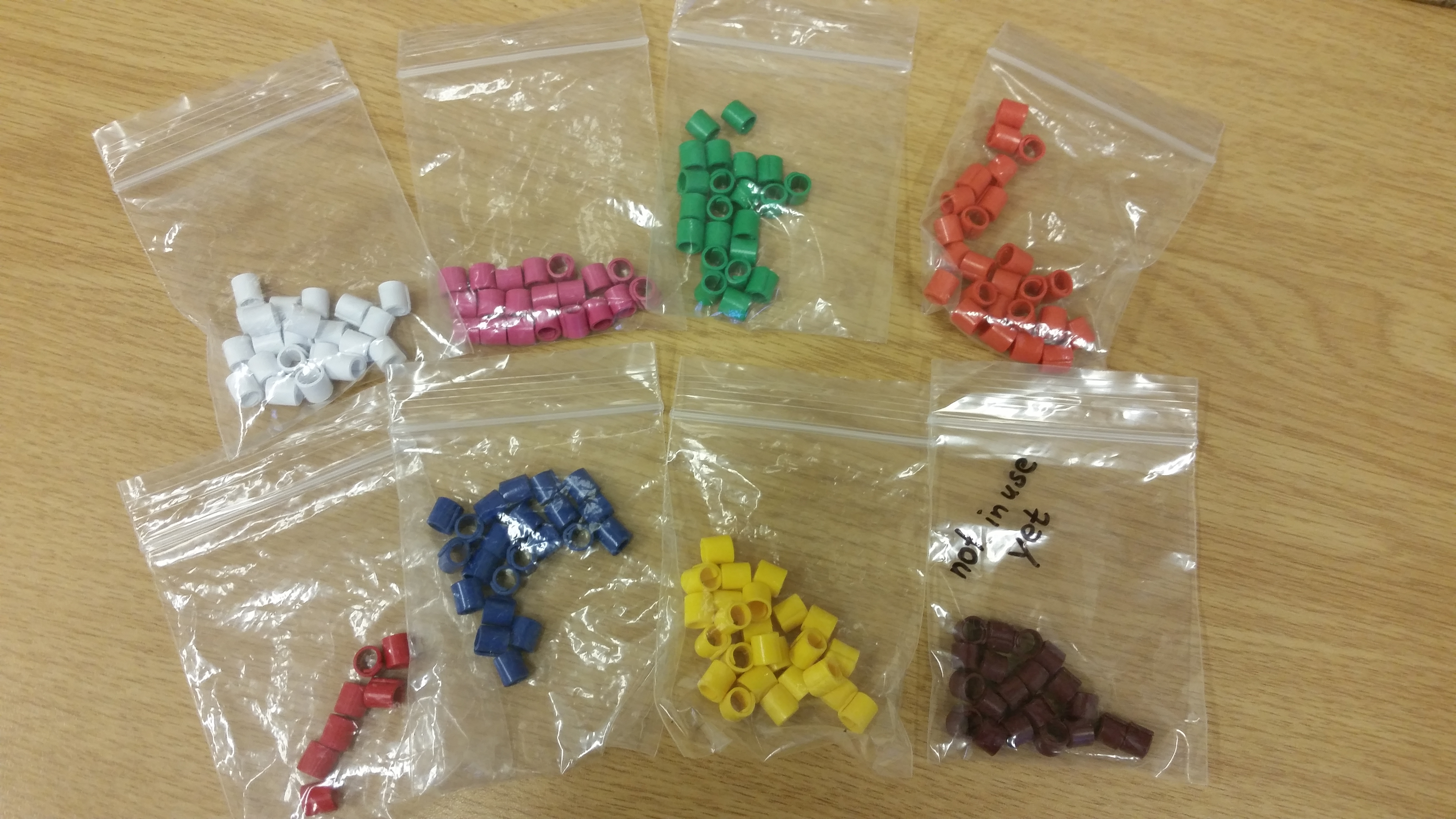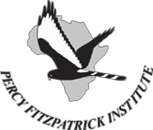| Species: | Red-winged Starling (Onychognathus morio) |
| Location: | University of Cape Town, Upper Campus, Western Cape, South Africa
Click to view sighting map |
| Running From: | 2017 to present |
| Ring Type: | Legring: colour combination |
| Colour Combination: | 3 colours per bird |


Anyone who has spent a bit of time at UCT will know about the (in?)famous lunch-thieving Red-winged starlings on campus. The FitzPatrick Institute of African Ornithology is doing research on these birds, and we could use your help! The project will look at how these wily birds cope with highly variable food quality and quantity in urban environments. One of the aims is to see how these junk food-dependent birds deal with the lack of food on campus over weekends and holidays.
To study their physiology and nutrition, we need to capture, colour ring and get small blood samples from as many individuals as possible. Don’t worry, it might look stressful for the birds but we know what we are doing and have the appropriate ethics approval to ensure that the birds experience minimal stress. The birds are released immediately afterwards and that’s where you come in. Please report any sightings of colour-ringed birds to us! Colour-ringing the birds allows us to identify each unique individual, and resightings of such birds can provide great insight into their movement patterns and survival rates.
To report sightings you can either post on this page or join a WhatsApp group using this link which allows you to join and leave as you please:
https://chat.whatsapp.com/6gCMZRiBpgPFcImry3EeUT
When reporting ring combinations, just tell us the following information - colour over colour on right leg, colour over metal on left leg (but we know that the metal ring is always on the left, so you don’t even need to worry about left and right, just the colours - see pictures below for examples).
Please also include your location and the time. Ideally, you should send your location to the whatsapp group at the time, but if you cannot do it immediately then drop a pin on google maps and send those coordinates and the time of the sighting, but please try be as accurate as possible.
Lastly, please spread the word – remember, it only works if we have as many people as possible keeping an eye out for us! It’s also important for people to know what we’re doing, and anyone can follow this page for updates and information on the project. Thank you!
